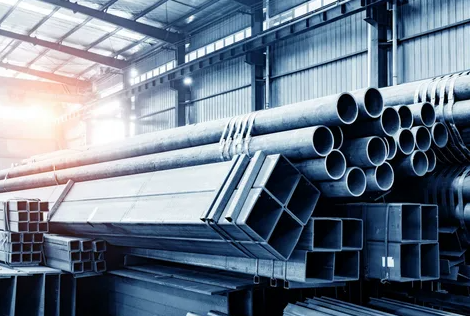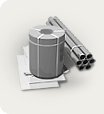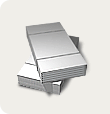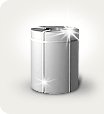High energy prices and weak demand have led to a historic decline in German steel production in 2023, the national steel industry association WV Stahl said on Tuesday, January 23.
In December 2023, the country produced 2.631 million tons of steel, which is 2.3% less than in December 2022. For all of 2023, German steel production fell 3.9% year on year to 35.438 million tonnes.
“This is the lowest production volume since the financial market crisis in 2009,” said V.V. Stahl. “However, at that time things were quickly picking up again after the sharp decline caused by the recession.”
The country's energy-intensive electric arc furnace (EAF) manufacturing has been particularly impacted by high electricity prices and a weak construction sector, according to an industry association. German electric steel mills produced 533,000 tonnes of crude steel in December, up just 0.4% from December 2022.
In December 2022, the country's steel production was hit hard by multiple cuts in response to weak demand, so there was little recovery in December 2023 due to the low base of comparison.
However, in 2023, total EAF production fell to 9.806 million tons, down 10.8% from the previous year. “The volume even fell below the low point [which was observed] during the financial market crisis,” said V.V. Stahl. “At that time, electric steel production was 11.3 million tons.”
WV Stahl added that there has been a steady decline in production since March 2022. According to the association, such a long negative cycle has never before been observed in the German steel industry.
Steel produced by EAF is mainly used in the production of long products. According to Fastmarkets sources, demand for long products in Germany remained sluggish due to the slow development of the construction sector.
Fastmarkets' weekly estimate of domestically produced steel rebar (rebar) supplied to Northern Europe averaged €642.50 ($699.84) per tonne in December, compared with an average of €753.75 per tonne a year earlier.
Meanwhile, output of steel from Germany's basic oxygen furnaces (BOFs), which is mainly used in the production of flat products, fell 2.9% year-on-year to 2.099 million tonnes in December.
Prices for flat steel in Europe rose in December as mills tried to cover higher production costs. But demand remained low. Fastmarkets sources explained that the rise in prices this month was due to limited availability of the material in the market.
Fastmarkets' daily calculation of the domestic hot rolled coil index, excluding Northern Europe, averaged €688.20/t in December, up from the €642.73/t average a year earlier.
However, market sources remain skeptical that German steel production will recover in 2024.
Kerstin Maria Rippel, CEO of WV Stahl, called for political action to mitigate the impact of rising production costs in the steel industry.
“This is especially acute when it comes to still-uncompetitive electricity prices,” Rieppel said. “Since the beginning of the year, transmission fees have doubled and are higher than ever before.”
She added that a clear policy message is needed on how to sustainably finance the industry's transformation towards climate neutrality.
German steel production in 2023 will be the lowest since 2009

|
|
Azovpromstal® 24 January 2024 г. 23:13 |





